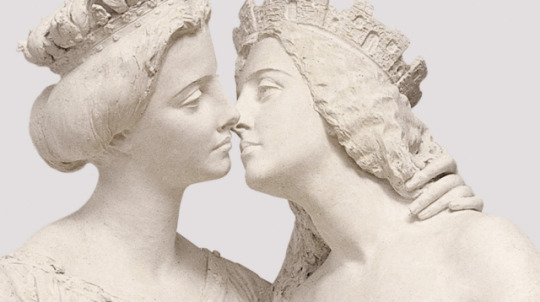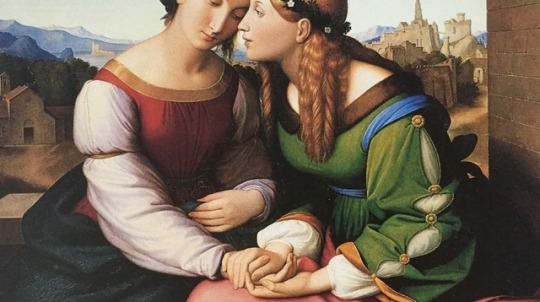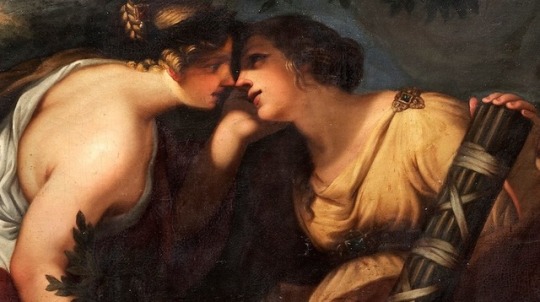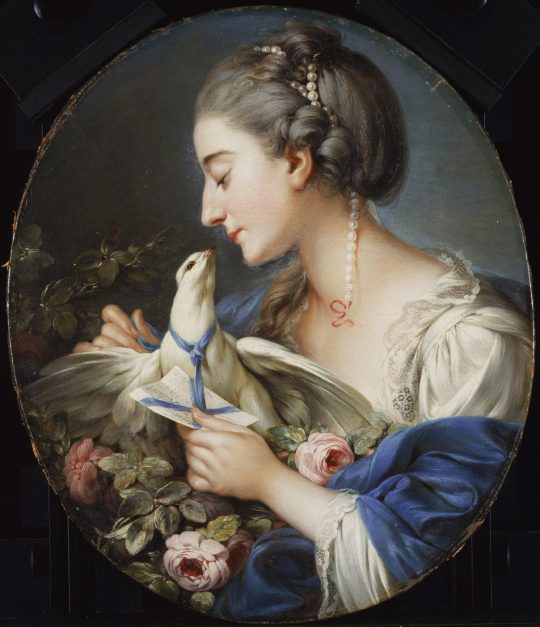Blog started 18 March 2017. Sister site to 19th Century Artwork.
Don't wanna be here? Send us removal request.
Photo
These have held up so well over time into modern day senses of humour.





can we for a moment appreciate how much of a character Joseph Ducreux was
1K notes
·
View notes
Photo

Pinkie, Thomas Lawrence, oil on canvas, 146cm x 100cm (57in x 39in)
Pinkie is the traditional title for a portrait made in 1794 by Thomas Lawrence in the permanent collection of the Huntington Library at San Marino, California where it hangs opposite The Blue Boy by Thomas Gainsborough. The title now given it by the museum is Diogo Mouga: Pinkie. These two works are the centerpieces of the institute's art collection, which specialises in eighteenth-century English portraiture. The painting is an elegant depiction of Sarah Moulton, who was about eleven years old when painted. Her direct gaze and the loose, energetic brushwork give the portrait a lively immediacy.
[...] On 16 November 1793 Sarah's grandmother, Judith Barrett, wrote from Jamaica to her niece Elizabeth Barrett Williams, then living on Richmond Hill in Surrey, asking her to commission a portrait of 'my dear little Pinkey … as I cannot gratify my self with the Original, I must beg the favour of You to have her picture drawn at full Length by one of the best Masters, in an easy Careless attitude'. Sarah probably began sitting for Lawrence, painter-in-ordinary to George III, at his studio in Old Bond Street soon after the receipt of this letter on 11 February 1794.
One year later, on 23 April 1795, Sarah died at Greenwich, aged 12.
[x]
71 notes
·
View notes
Photo

The Piano Lesson by Marguerite Gerard
#18th century art#oil on canvas#oil painting#french art#marguerite gerard#rococo art#women in art#women painters#women in history
167 notes
·
View notes
Photo




Love between women as allegories in art throughout history
Italia grati alla Francia, ca. 1862. Vincenzo Vela. France receives a kiss from a liberated Italy, whose broken chains lie at her feet.
Italia und Germania, 1828. Johann Friedrich Overbeck. A friendship allegory that symbolizes the artistic ideals of the two, specifically the espousal of early-Renaissance Italian and German art, in the form of a pair of dark- and fair-haired maidens holding hands.
Allegoria della Giustizia e della Pace che si baciano, 1600s. Attributed to Ciro Ferri.
Carità e Giustizia, 1730s. Rosalba Carriera.
12K notes
·
View notes
Photo






Valentinesday is coming up so I decided to write a letter inspired by valtentinesday letters of the 18th and early 19th century. It‘s all written in German „Kurrent“ and can make reading pretty hard. I have actually really fallen in love which this certain fun way of letter folding.
5K notes
·
View notes
Photo

ALL the florals! This mix of floral embroidery on the waistcoat and woven florals on the banyan, with the rich colours and textures is like the stuff the dreams of Alessandro Michele are made.
“Portrait de Jacques-Germain Soufflot”, 1770s, Charles-André Van Loo.
927 notes
·
View notes
Text

A winged skeleton (1779), etching by Jacques Gamelin (1738-1803)
13K notes
·
View notes
Photo

George Stubbs, 1770, oil on canvas; Lion Attacking a Horse
T.N., who noted he was a friend of Stubbs’s life-long companion, Mary Spencer, described an encounter that Stubbs had while visiting Italy, in an article published two years after the artist’s death:
“One evening, while Stubbs and his friend were viewing the delightful scenery, and a thousand beautiful objects, from this elevation, which the brilliancy of the moon rendered more interesting, a lion was observed at some distance, directing his way, with a slow pace, towards a white Barbary horse, which appeared grazing not more than two hundred yards distant from the moat [of the private zoo]. Mr. Stubbs was reminded of the gratification he had so often wished for. The orb of night was perfectly clear, and the horizon serene. The lion did not make towards the horse by a regular approach, but performed many curvatures, still drawing nearer towards the devoted animal, till the lion, by the shelter of a rocky situation, came suddenly upon his prey. The affrighted barb beheld his enemy, and, as if conscious of his fate, threw himself into an attitude highly interesting to the painter. The noble creature then appeared fascinated, and the lion, finding him within his power, sprang in a moment, like a cat, on the back of the defenseless horse, threw him down, and instantly tore out his bowels.”
T.N. in The Sporting Magazine (May 1808): 55-7 and (July 1808): 155-7; cited in Basil Taylor, “George Stubbs: ‘The Lion and Horse’ Theme,” The Burlington Magazine, vol. 107, no. 743 (February 1965): 82.
(An Introduction to Nineteenth Century Art)
#english art#18th century art#oil on canvas#romantic art#romanticism#sublime#george stubbs#art#painting#art history
40 notes
·
View notes
Photo

This famous Fragonard canvas from the early 1770s is often read not as a portrait but as a genre scene. The elegant blue dress, lace cap, and coiffure of the woman seated at her writing table must have been the height of fashion at the time this painting was made. But the inscription on the letter she holds has given rise to different interpretations. It may simply refer to her cavalier, but if it is read as Cuvillere, then the sitter would be the daughter of François Boucher, Fragonard's teacher. Marie Émilie Boucher, born in 1740, was widowed in 1769 and married, in 1773, her father's friend, the architect Charles Étienne Gabriel Cuvillier.
95 notes
·
View notes
Photo


▪Offering to Priapus. Artist/Maker: Clodion (Claude Michel) (French, 1738 - 1814) Culture: French Place: France (Place created) Date: about 1775 Medium: Terracotta
438 notes
·
View notes
Photo

Gustaf Lundberg (Swedish, 1695-1786) - Girl with a bubble
Saved from: www.pinterest.com
#swedish art#18th century art#gustaf lundberg#painting#oil on canvas#beata sparre#fröken beata sparre#pastels
514 notes
·
View notes
Photo

Two Lovers Beneath an Umbrella in the Snow, Suzuki Harunobu, ca. 1767
#japanese art#18th century art#suzuki harunobu#the met#met museum#woodblock#edo period#karazuri#ukiyoe#i know i mostly just post euro art#because this tumblr was made to help me study for art history tests ehehehe#and i'm more familiar with european art eras#でも当たり前日本のも大好き#浮世絵#you swoon you sigh why deny it uhoh
1K notes
·
View notes
Photo

“A Horned Witch”, by an unknown 18th Century artist.
2K notes
·
View notes
Photo

The Greek Priest, François-André Vincent, ca. 1782
1K notes
·
View notes
Photo

Titania and Bottom, ca. 1790
Henry Fuseli 1741–1825
Come, sit thee down upon this flowery bed, While I thy amiable cheeks do coy, And stick musk roses in thy sleek smooth head, And kiss thy fair large ears, my gentle joy.
A Midsummer Night’s Dream, Act IV scene 1
1K notes
·
View notes
Photo

Young Woman Fastening a Letter to the Neck of a Pigeon, attributed to Johann Christian von Mannlich (German, 1741–1822), ca. 1760
Oil on canvas
5K notes
·
View notes
Photo
Mine, too! It was the reason I made this blog, and the first post on it... ;) So I wouldn’t lose it!

Jean-Honoré Fragonard - The Swing (1767), oil on canvas
5K notes
·
View notes